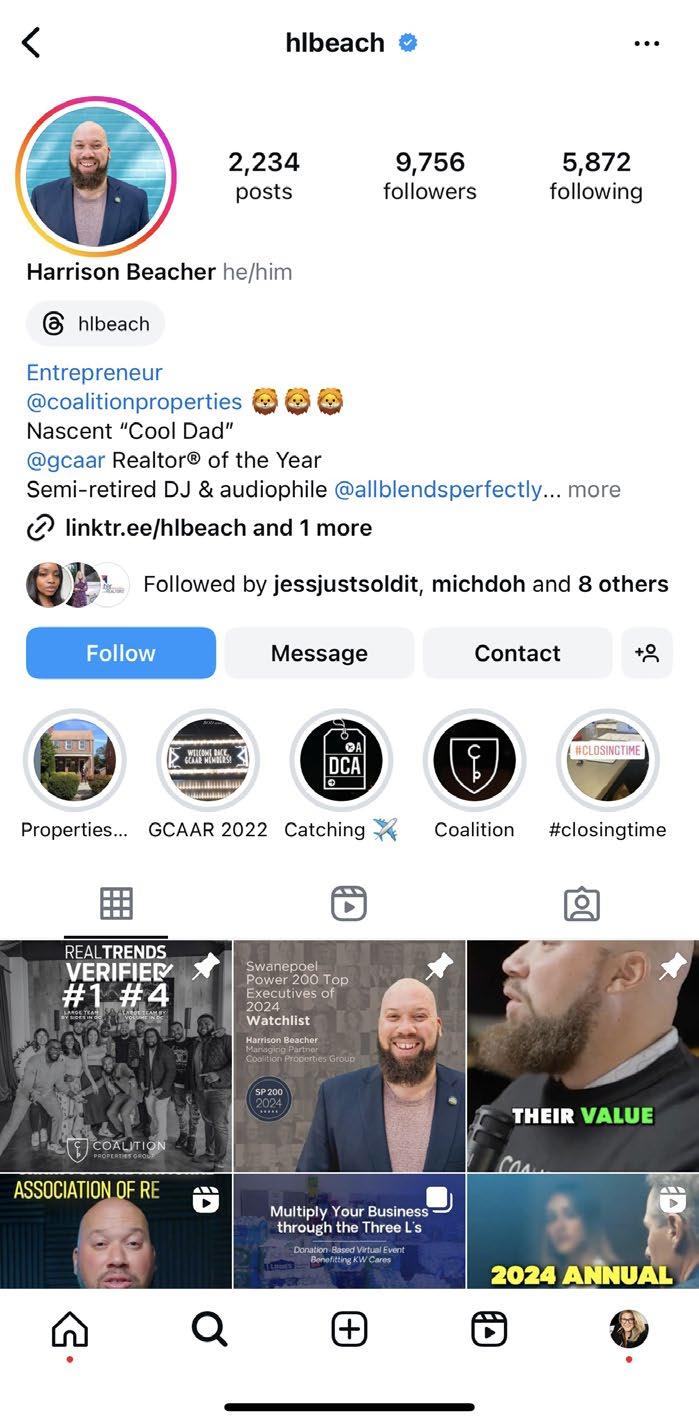




2025 business planning



Our legacy isn’t just about our past; it’s the solid foundation upon which we build the future of Michigan real estate. Thank you for being an essential part of our tradition of family values, strong community connections, and a commitment to excellence. Together, we continue to uphold and grow the legacy of trust that has made us Michigan’s leading real estate family for generations.
Home Price Predictions
Experts generally expect home prices to continue increasing, but the pace of those increases should slow in 2025.
• Fannie Mae sees home prices rising 6.1% year over year by the end of 2024. In 2025, home price growth could slow to 3% year over year.
• The Mortgage Bankers Association believes prices could rise 3.9% this year. By 2025 it sees price growth slowing to 2.7% year over year.
• The National Association of Realtors thinks existing-home prices will increase 3.8% overall by the end of 2024, and that they'll increase by just 2% year over year by the end of 2025.
Mortgage Rate Predictions
Mortgage rates are forecast to decline slightly, with expectations ranging from 5.7% to 5.8% for 30-year fixed-rate mortgages, influenced by gradual easing of inflation.
I agree with a BIG “but”, mortgage rates will trend lower, however, we should prepare our customers that the 5.7% to 5.8% range is a bit optimistic, I would estimate rates between 5.8%-6.25%
Inventory Predictions
I’m cautiously optimistic that rates will trend lower however, we should prepare our clients for higher rates than expected as there are multiple variables that need to occur in order to maintain lower rates for a longer period of time. Because of the uncertainty where rates are truly headed, it is important to encourage your buyers to stay in close contact with their Loan Officer so you know, as agents, you know their up to the minute approved amount.
Inventory is predicted to increase gradually. Lower mortgage rates could reduce the "lock-in" effect, bringing more homes onto the market, especially in affordable price ranges.
The "lock-in effect" refers to a situation in the housing market where homeowners with low mortgage rates, usually secured in earlier years, are reluctant to sell their homes because doing so would require taking on a new mortgage at a much higher rate.
Practitioner Changes
Realtors will have adapted to the commission changes and to remain competitive, will focus on offering enhanced services such as personalized consultations, market analytics, and targeted marketing strategies. Realtors who can confidently explain market conditions, set clear expectations, and detail all costs, including commissions, will stand out and thrive in the evolving real estate landscape.
Agreedno changes to points made. DAN AGREES
DAN AGREES
Agreedno changes to points made.
Baby boomers are currently holding onto a lot of real estate. But as they get older and pass away or move into long-term care facilities like nursing homes, more and more of that real estate will be put back on the market. Because those seniors aren’t looking to purchase another home to replace their current one, this adds new housing supply that wasn’t there before.
This “Silver Tsunami” effect could help make it easier for first-time homebuyers and other cash-strapped borrowers to get into a home, since it will ease competition and allow prices to rise at a more moderate pace. However, it may take at least a few more years before we begin to see the impact of this.
Most agents know what’s happening.
Good agents understand what’s happening.
Great agents can explain what’s happening.


Commitment: Interested, committed, or obsessed? As you plan for 2025, remember that a plan without action is just words. Write a message to yourself affirming your commitment to executing this plan and holding yourself accountable to it.
Accountability: What additional accountability do you need to ensure a successful 2025?
Mission Statement: A mission statement articulates the purpose of your business and your means of reaching it. It should be a simple sentence or a phrase. The public needs to see it. And you need to focus on it.
Example: "My mission is to guide clients through the buying and selling process with personalized service, integrity, and expertise, ensuring a smooth and confident real estate experience."
Unique Selling Proposition (USP): What differentiates you from everyone else? Why should clients choose you?
Example: “I provide data-driven insights and personalized service, using cutting-edge technology to ensure fast, efficient sales and tailored client experiences."
Ex: Creating engaging, informative videos for social media
Notes
Ex: The agent who dominates the area adjacent my geo farm is retiring, so that area has good farming potential
Ex: Non-standardized, inefficient transaction management
Ex: The competition just opened an office to better serve the area that includes my geo-farm
A SWOT analysis complements your vision. Your vision tells you where you’re going. A SWOT analysis helps describe where you are. With a clear assessment of where you stand, the more effectively you can plan and build a bridge to your future. Write as many points as necessary to be thorough.


DMV | D.C, Maryland, Virginia
authenticity, trust, and community & industry service
Michelle Doherty’s brand identity as a realtor is built around authenticity, trust, and community and industry service. She combines her professional expertise with a personal touch, using social media to connect with clients and share her journey. Recognized in REALTOR Magazine’s 30 Under 30, Michelle emphasizes personalized service and strong community involvement, making her a trusted advisor in the real estate market.

ATLANTA, GA
professionalism, personalized service, and extensive local expertise
Kate Wright’s brand identity as a realtor in Atlanta is built around her reputation for professionalism, personalized service, and extensive local expertise. She emphasizes high-end real estate services and building strong relationships with her clients. Her deep knowledge of the Atlanta market and commitment to going above and beyond for clients have earned her recognition as a “Reputable Agent”, a distinction held by fewer than 8% of agents. This reflects her standing as a trusted advisor, both with clients and within the industry, making her highly sought after in the competitive Atlanta real estate market.


leadership, communityimpact, and exceptional service
Tommy Choi’s brand identity as a realtor centers around leadership, community impact, and exceptional client service. As a top producer in the Chicago market, his team is known for helping clients “lay down roots to build legacies,” with over $500 million in sales and a focus on personalized, attentive service. Choi’s leadership extends to his role as the first Korean-American president of the Chicago Association of Realtors, where he emphasizes community service through initiatives like “365 Days of Giving.”
Choi also champions technology’s role in enhancing real estate without replacing the personal touch agents bring. His dedication to building lasting relationships and his cultural and economic contributions to the community have earned him prestigious recognition, including being named to Crain’s Chicago Business’ 40 Under 40

community-driven, wealth-building focused, creative
Harrison Beacher is known for his community-driven approach to real estate, with over $250 million in transactions. He focuses on wealth-building and social media strategies while leading in roles like 2022 GCAAR President. His personable, creative style blends expertise with a commitment to the local community.

trust,communityinvolvementandclient-focusedexperiences
Sasha Tripp is known for delivering personalized, top-tier service through innovative marketing and strong client relationships. Her boutique firm focuses on exceeding client expectations with aggressive strategies and attention to detail. Her brand is built on trust, community involvement, and a seamless, client-focused experiences.



Instagram is highly visual, making it perfect for showcasing property listings, virtual tours, and behind-the-scenes real estate content.

Facebook remains a dominant platform for reaching a broad demographic, especially homeowners and buyers in the 35+ age group.


LinkedIn helps realtors establish credibility and connect with other professionals in the real estate industry, as well as potential high-end clients.
YouTube is the second largest search engine, making it a powerful tool for longform content like property walkthroughs and real estate tips.



TikTok’s short, engaging video format is gaining popularity, especially among younger homebuyers and sellers.
Pinterest is ideal for realtors who focus on visual inspiration and home design. It’s popular for reaching homebuyers looking for ideas.


While not as visual, X (formally known as Twitter) is great for real-time updates and connecting with local communities and industry experts.
Nextdoor is a hyper-local network that connects neighbors and communities, ideal for promoting listings and open houses.
High-quality photos and videos of properties, client testimonials, and engaging stories.
Use Instagram Stories for quick updates, Reels for property tours, and IGTV for longer videos.
Creating a business page, sharing listings, running targeted ads, and engaging in community groups.
Networking, sharing market insights, and posting professional achievements or real estate advice.
Hosting virtual tours, how-to guides for buyers and sellers, and market update videos.
Utilize Facebook Marketplace for listing properties and Facebook Live for virtual open houses and Q&A sessions.
Post regular industry updates and join LinkedIn Groups related to real estate.
Create a branded YouTube channel and optimize video descriptions for SEO.
Creative property showcases, quick tips, and trends in real estate.
Use trending hashtags and short, snappy property tours.
Showcasing interior design, home staging, and home improvement tips.
Create boards for different neighborhoods, property types, and design ideas.
Sharing market trends, tips, and engaging with other real estate professionals.
Use hashtags and Twitter Chats for conversations around real estate.
Sharing local market insights and connecting with neighborhood communities.
Engage in local discussions and promote neighborhood-specific events.

Brand identity plays a critical role in establishing credibility, trust, and personal connection with potential clients. In the highly competitive real estate market, a well-developed brand identity helps stand out, attract clients, and communicate your unique value proposition.
Branding involves crafting an image that reflects your personality, expertise, and professionalism. Clients need to feel a connection and a strong personal brand identity helps to build that trust.
Style of images (formal, friendly, or dynamic) becomes a key part of brand identity, as it influences how approachable and trustworthy you appear to potential clients.
The tone of voice used in marketing materials, whether in social media posts, emails, or property descriptions, should be consistent brand identity. For example, a luxury realtor might have a more formal, elegant tone, while a realtor focusing on first-time homebuyers might adopt a friendlier, more approachable tone.
Flyers, brochures, business cards, and other physical marketing tools should reflect a consistent look and feel. This includes colors, fonts, and messaging that align with the overall brand identity. These materials need to convey professionalism, reliability, and local expertise.
Brand identity is heavily tied to your reputation. Client testimonials, reviews, and word-of-mouth recommendations are vital in shaping how potential clients perceive you. Showcasing these reviews helps reinforce the trustworthiness of the brand.
Use social media platforms like Instagram, Facebook, and LinkedIn to reinforce your brand identity through content. This might include virtual property tours, behind-the-scenes glimpses of your work, educational posts about the market, and success stories. The content should be consistent in style, tone, and messaging to reflect your brand.
Providing exceptional customer service, being responsive, transparent, and offering personalized attention will strengthen your identity and reputation. Clients should feel that you truly understand their needs and offers tailored solutions.


About You- Resume/Bio
Evidence of Success (Success Map)
Process Expectations
Marketing Strategy
Pricing Strategy
Checklists

Separate booklet (property specific information)
CMA
Listing Documents




Initial Consultation & Listing Agreement
Listing Live on the Market
Showings & Feedback
Offer Received
Negotiation of Offers
Offer Accepted & Entering Due Diligence
Home Inspection
Appraisal
Final Walkthrough
Closing Day & Key Exchange
Post-Move Follow-Up
Initial Consultation & Pre-Approval
Personalized Property Search
Offer Preparation & Contract Review
Offer Acceptance or Counteroffer
Earnest Money Deposit
Home Inspection
Appraisal
Loan Approval Process
Final Walkthrough
Closing Day & Key Exchange
Post-Move Follow-Up

Access the full set of email templates here, copy and paste, update with your personalizations and send it out!

Subject: Your Home is Now Listed on the Market!
Hi [Seller’s Name],
I’m excited to let you know that your home is officially live on the market! Your property has been listed on the Multiple Listing Service (MLS) and other major real estate websites. Here is the link to your online listing: [Insert Link].
I’ll also be promoting your home through [describe your marketing strategies, such as social media campaigns, email outreach to potential buyers, and virtual tours]. This exposure will ensure that your home reaches as many qualified buyers as possible.
What’s next?
Now that your home is live, we’ll start scheduling showings. I’ll keep you updated on any feedback we receive from buyers and agents. Once we start receiving offers, I’ll present them to you and help guide you through the negotiation process. I’ll be in touch soon with updates!
Best regards,
[Your Name]
[Your Contact Information]
Subject: Personalized Property Search Set Up for You!
Hi [Buyer’s Name],
I’ve set up a personalized property search tailored specifically to your criteria! This means you’ll start receiving new listings that match your preferences directly to your email inbox. This search includes homes that fit the specifications we discussed, such as [list key features like price range, location, number of bedrooms/bathrooms, etc.]
The personalized search will ensure that you’re the first to know when a home that matches your criteria hits the market, so keep an eye on your email for new properties. If any of the listings stand out, just let me know, and I’ll schedule a showing at your convenience.
What’s next?
As we start looking at homes, I’ll be checking in for your feedback on the properties we view. Based on your input, we can adjust your search criteria to fine-tune the listings you receive. Once you find a home you love, we’ll move forward with making an offer and negotiating terms. I’ll guide you every step of the way!
Looking forward to helping you find the perfect home!
Best regards,
[Your Name]
[Your Contact Information]




What are the top 3 things that you want people to say or feel about you?
Personally
Professionally
Colors Style
WHAT YOU LIKE vs WHO YOU ARE
WORDS THAT DESCRIBE YOUR BRAND



A CRM is essential for managing client relationships, streamlining tasks, and improving efficiency. It centralizes client information, automates follow-ups, tracks leads, and provides data-driven insights. By organizing communication and ensuring a consistent client experience, a CRM helps boost client retention, increase referrals, and ultimately grow your business.
1. What customer relationship management system do you use in your business?
OurOnePlace (free)
kvCORE (start at $299/month)
Follow Up Boss (start at $69/month)
LionDesk (start at $21/month)
Top Producer (start at $69/month)
BoomTown (start at $1000/month)
Real Geeks (start at $249/month)
Wise Agent (start at $32/month)
Realvolve (start at $99/month)
Chime (start at $499/month)
2. Do you log in daily, weekly or occasionally? Be honest.
3. How many leads/clients/contacts are in your current database?
4. How many of those clients consider you, their REALTOR?


It’s important to have a clear process for turning leads into clients, followed by a system of standard procedures. Without this, details get missed, leading to unhappy clients and wasted time. A well-structured workflow helps keep things on track and improves your business efficiency.
1. What is the first step you take when a client reaches out to engage in your services?
Buyer:
Seller:
2.Does your client have homework to complete after your first meeting?
Buyer:
Seller:
3. What item of value do you leave with your client?
Buyer:
Seller:
4.Do you leave the meeting with clear next steps and contact points to continue the real estate process? What are those next steps?

The goal of business operations is to create a repeatable and memorable experience that buyers and sellers will love. A wellstructured process is key to turning one-time transactions into lifelong clients. This process should be adaptable to market conditions but consistently applied to ensure reliable results. The system should flow seamlessly, much like a well-designed diagram, where each step leads to the next, ensuring both efficiency and customer satisfaction.
1.Describe your step-by-step home buyer process from initial showing to close.
To build a successful real estate business, it’s crucial to transition from being just a real estate agent at closing to becoming a trusted real estate advisor. This requires a system that consistently delivers value to clients, ensuring they always see your brand and message. By maintaining this relationship and positioning yourself as their go-to expert, you’ll create lifelong clients who adore you, naturally refer you to others, and are eager to work with you again.
1.Describe your current post-close program, including the touch points and cadence next sentence
2.Describe your step-by-step home seller process from initial listing agreement to close.
2.What unique value propositions do you provide to your clients consistently after closing?
3.Do you teach your clients how to be great homeowners after closing?
3. What improvements can be made to these steps?
4.Do you update your clients on their investment after closing? Do you update them on the market? How often?
5.Does your post-closing process align with your brand?


Send a local event calendar for the year, including festivals, farmers’ markets, and charity runs.
Host or participate in a community charity drive (food or clothing donation) and invite clients to contribute.
Send a “Support Local” guide featuring your favorite local businesses, restaurants, and shops.
Sponsor or promote a neighborhood cleanup day and invite clients to join.
Organize a client appreciation picnic or outdoor event in a local park.
Promote or host a summer block party and include clients and community members.
Share local 4th of July celebration details or organize a fireworkwatching event.
Highlight end-of-summer festivals or outdoor movie nights in the community.
Host a back-to-school donation drive for supplies to support local schools.
Send invitations to a fallthemed event, such as a pumpkin patch or corn maze trip.
Quarterly: Send a real estate market report with a breakdown of trends, price changes, and inventory in the local market.
January: Share a “New Year, New Market” forecast with predictions for the year ahead.
March: Provide tips for maximizing home value for spring sales, focusing on curb appeal and pre-listing improvements.
June: Send a “Mid-Year Market Recap” with key insights and highlights from the first half of the year.
September: Share a “Fall Market Outlook” to keep clients updated on seasonal trends and opportunities.
December: Send a “Year-in-Review” real estate newsletter with the most important market developments.
Share a list of community Thanksgiving volunteer opportunities.
Host a holiday toy or food drive and offer to collect donations from clients.
January: Send personalized Happy New Year cards with a small calendar or magnet featuring your contact info.
February: Send Valentine’s Day cards with a lighthearted message, like “Love where you live!”
March: Email a fun St. Patrick’s Day greeting or host a “Luck of the Irish” giveaway.
April: Share a spring cleaning checklist or guide with easy home organization tips.
June: Send personalized notes with iced coffee gift cards to celebrate summer’s arrival.
July: Share a BBQ recipe or guide to hosting the ultimate summer gathering.
August: Organize a “Summer Fun” giveaway (e.g., beach gear or outdoor games) for clients and friends.
October: Host a Halloween home-decorating contest or send a fun “spooky” themed e-card.
November: Send handwritten Thanksgiving notes expressing gratitude for their business and friendship.
December: Share personalized holiday cards with a small gift, like a locally sourced ornament.
January: Share a guide on financial planning for homebuyers, with budgeting tips and mortgage options.
March: Provide a checklist for homeowners on preparing their homes for spring, including cleaning and maintenance tips.
May: Send a home valuation tool link, encouraging clients to see how much their property is worth.
July: Offer a summer home maintenance checklist, including tasks for keeping homes cool and energy-efficient.
September: Send a guide for preparing homes for the fall market, focusing on small updates and staging tips.
November: Share a “How to Winterize Your Home” checklist to help homeowners prepare for colder weather.
December: Email a home safety guide for the holidays, covering security tips and fire safety.
Quarterly: Send a client referral reward offer or promote your referral program with a giveaway (e.g., gift cards or local experiences).
March: Host a “Client Appreciation Month” event, such as a virtual happy hour or wine tasting.
June: Organize a summer referral contest, with prizes for clients who refer new leads or connections.
October: Host a client appreciation fall festival or gathering, offering seasonal treats and games.
December: Send thank-you gifts to top clients or those who have referred others, including personalized notes.
February: Host a virtual first-time homebuyer workshop, sharing tips and insights on securing a mortgage and finding the right home.
April: Send a guide on how to navigate multiple offers in a competitive market.
June: Offer a webinar on DIY home improvements that increase value, along with budget-friendly renovation ideas.
August: Provide a “Downsizing Tips” guide for older clients or those moving from larger homes.
October: Host a real estate investment seminar, focusing on how to start investing in rental properties or vacation homes.
November: Share tips on selling during the holiday season, including the pros and cons and how to stage a home for winter.
Monthly Real Estate Newsletter: Include local market stats, recent transactions, upcoming events, and home tips.
Seasonal Home Trends: Focus on emerging design trends, color palettes, and smart home technologies.
January: Share a guide to New Year’s resolutions related to homeownership, such as financial goals or renovation plans.
February: Email a winter maintenance checklist for keeping homes safe during colder months.
April: Send an Easter or spring-themed greeting with gardening tips or home décor ideas.
June: Provide a summer vacation safety guide for homeowners who will be away, with tips on securing the home.
September: Send an autumn home décor guide, with tips on cozy design updates.
December: Share holiday home-selling tips, including ideas for festive but minimalist decorations that appeal to buyers.
Spring (April): Drop off small potted plants or seed packets with a note saying “Thank you for helping my business grow!”
Summer (June): Deliver sunscreen or lemonade kits with a tag like “Stay cool this summer!”
Fall (October): Share mini pumpkin spice candles or treats with “Fall in love with your home” tags.
Winter (December): Gift holiday cookies or hot cocoa kits with “Wishing you a warm and cozy holiday season” notes.

IDENTIFY THE LEAD SOURCE/AUDIENCE
IDENTIFY THE LEAD SOURCE/AUDIENCE
IDENTIFY THE LEAD SOURCE/AUDIENCE
IDENTIFY THE LEAD SOURCE/AUDIENCE


LEAD SOURCE
ONE-OFFS
TOTAL % OF BUSINESS
BUYERS
TOTAL SALES VOLUME
TOTAL GCI
AVERAGE HOME VALUE
AVERAGE GCI
Here’s a comprehensive checklist to ensure all aspects of marketing a listing are covered. This will help maximize exposure and attract the most potential buyers.
□ Conduct a walkthrough to identify any necessary repairs or updates
□ Recommend professional staging or provide guidance for DIY staging
□ Schedule a deep clean of the home (interior and exterior)
□ Ensure curb appeal is optimized (porch and front door décor, landscaping, paint touch-ups, etc.)
Advanced Property Preparation
□ Virtual Staging: Use virtual staging for empty homes to showcase potential layouts.
□ 3D Matterport Tour: Offer a fully interactive 3D virtual tour for immersive online viewings.
□ Augmented Reality (AR): Use AR apps to allow buyers to visualize changes or customizations to the property (e.g., furniture placement, wall colors).
□ Smart Home Enhancements: Highlight any smart home technologies and offer consultations for adding value to listings.

□ Hire a professional photographer for high-quality photos
□ Schedule drone photography for aerial views (if applicable)
□ Create a virtual tour of the property (360-degree or video walkthrough)
□ Take twilight or seasonal shots to showcase the home’s look
□ Ensure staging and lighting are perfect before the photoshoot
Advanced Visuals & Content Creation
□ Cinematic Property Videos: A professionally edited video with cinematic quality, aerial shots, lifestyle features, & neighborhood footage.
□ Property Teaser Trailer: A short teaser video (15-30 seconds) for social media and ad campaigns to build excitement pre-launch.
□ Behind-the-Scenes Content: Share BTS content during property preparation (e.g., staging, drone filming) to build a storyline around the listing.
□ Interactive Floor Plans: Provide interactive floor plans that allow users to click through each room and see measurements and features.

□ Upload property details to MLS (Multiple Listing Service)
□ Syndicate listing to major real estate sites (Zillow, Realtor.com, Trulia, etc.)
□ Write a compelling listing description highlighting key features and benefits
□ Include high-quality photos and virtual tour links on all platforms
□ Verify accuracy of the listing information and update if necessary
□ Post listing on all social media platforms (Facebook, Instagram, LinkedIn, etc.)
□ Ask 5 Friends and Seller to share the post on their social media platforms.
□ Create targeted Facebook and Instagram ads to reach relevant buyers
□ Use Instagram Stories, Reels, and Facebook Live to showcase the property
□ Share posts in local real estate and community groups on social media
□ Post teaser images or videos leading up to the open house or listing launch
□ Include popular real estate hashtags to increase discoverability.
□ Instagram Reels and TikTok Tours: Create engaging short-form video content showcasing the property, using trending formats and music to reach a wider audience.
□ Instagram Guides: Create a guide featuring your listed property along with other local listings or neighborhood insights.
□ Pinterest Property Board: Create a Pinterest board dedicated to the property, including images, staging tips, and home improvement ideas.
□ Facebook Pixel Tracking: Set up Facebook Pixel on your website to track and optimize ad performance based on buyer behavior.
□ Collaborate with Influencers: Partner with local lifestyle or home décor influencers to showcase the listing in exchange for cross-promotion.
□ 24-48 post listing on MLS- Reverse prospect to create urgency within the marketplace.
□ Send an email blast to your contact database about the new listing
□ Include professional photos, virtual tours, and listing details in the email
□ Create a targeted email campaign for specific buyer demographics within your CRM.
□ Share the listing with your Realtor network via email
□ Create a Google Ads campaign targeting relevant keywords and local searches
□ Set up pay-per-click (PPC) ads to direct traffic to the listing or a dedicated landing page
□ Run retargeting ads to keep the property visible to those who have viewed it online
□ Boost posts on social media to extend the reach of organic posts

□ SEO-Optimized Blog Post: Write a blog post about the property or neighborhood, optimizing for local SEO to attract organic search traffic.
□ Geotargeted Ads: Run geotargeted ads on platforms like Google Ads and Facebook Ads, targeting specific ZIP codes, neighborhoods, and regions.
□ Retargeting Campaigns: Set up retargeting campaigns to show ads to users who have previously viewed the listing or visited your website.
□ Dynamic Property Ads: Create dynamic ads that change based on user behavior, showing them homes similar to the one they viewed.
□ YouTube Advertising: Run YouTube ads featuring your property video, targeting local buyers and investors.
□ LinkedIn Ads: Use LinkedIn Ads to reach high-net-worth individuals, professionals, or corporate buyers interested in investing in real estate.

□ Create a dedicated website or landing page for the property
□ Include a full photo gallery, virtual tour, property details, and neighborhood information
□Add a contact form or schedule-aviewing option
□Optimize the landing page for SEO with keywords related to the listing
□ Schedule an open house and promote it online, via email, and in print
□ Host a virtual open house or live stream walkthrough for remote buyers
□ Place directional signs leading to the open house on event day
□ Offer exclusive showings to local real estate agents and buyers
□ Collect feedback from open house attendees to improve marketing

□ Design and print flyers or brochures for distribution at open houses and showings
□ Create “Just Listed” postcards and mail them to local homeowners
□ Distribute property flyers in hightraffic areas (local businesses, cafes, community boards)
□ Place ads in local newspapers or real estate magazines
□ Include QR codes on print materials to link directly to the property listing or virtual tour
□ Luxury Property Magazine
Placement: Place full-page ads in highend luxury real estate magazines to reach affluent buyers.
□ Targeted Direct Mail Campaigns: Use data analytics to send direct mail to specific high-income households or investors based on demographic and behavioral data.

□ Install a high-quality “For Sale” sign on the property
□ Add flyers or brochures to the sign with property details
□ Use directional signs in the neighborhood to guide potential buyers to the listing
□ Include a QR code on the sign for instant access to the listing page
□ Notify your Realtor network of the new listing via email and social media
□ Schedule a broker open house to give local agents a preview of the property
□ Build relationships with local businesses and referral partners
□ Private Virtual Showings for HighValue Clients: Offer private virtual tours for high-net-worth clients or investors before listing publicly.
□ Investor Outreach: Contact your network of investors and real estate investment groups directly, highlighting ROI potential or rental income opportunities.
□ Exclusive Email Campaigns: Send “Coming Soon” email campaigns to a curated list of past clients, investors, and top-performing agents.
□ Collaborate with Local Businesses: Partner with local businesses (e.g., furniture stores, interior designers) to cross-promote the property.
□ Engage with local community groups, sharing listing details or inviting them to the open house
□ Webinar or Live Q&A: Host a live Q&A session or webinar about the property for serious buyers, highlighting its key features and answering questions in real-time.
□ Lead Magnets: Offer downloadable guides (e.g., neighborhood guides, market reports) on the listing page to capture email addresses.
□ Track listing views and engagement on real estate platforms and social media
□ Use Google Analytics to monitor traffic on the property’s landing page
□ Send weekly performance reports to the seller, including feedback from potential buyers
□ Adjust pricing, ads, or marketing strategy based on the level of interest and market feedback
□ Handle inquiries and schedule showings promptly
□ Manage and negotiate offers professionally
□ Continue providing marketing support until the property is sold
□ Communicate consistently with both seller and buyer agents throughout the process

□ Property Case Study: Create a case study of the sale process (how fast it sold, strategies used) to share with future sellers as a success story.
□ Client Testimonials and Referrals: Capture video or written testimonials from the seller and ask for referrals for future listings.
□ Thank You Campaign: Send personalized thank-you notes and gifts to buyers and sellers after closing to strengthen the relationship and encourage referrals.
□ Survey Clients: Conduct a survey to gather feedback on the sales process to improve future listings and marketing strategies.


